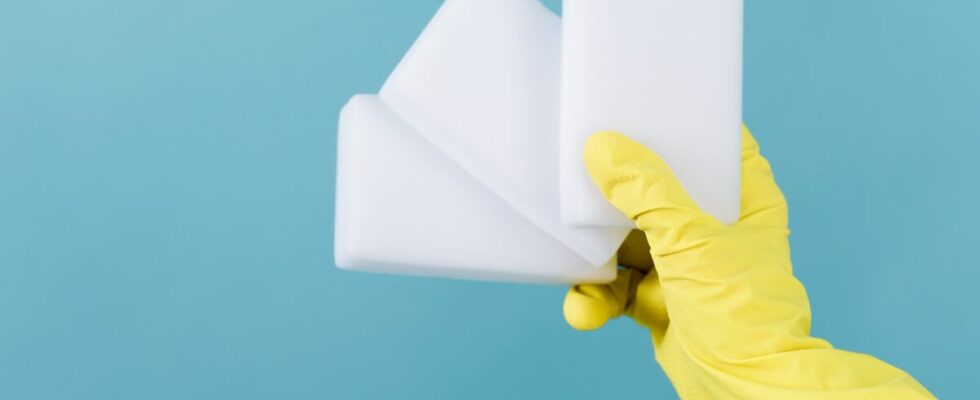Appearing in the 1950s, the magic sponge won many fans thanks to its ability to remove stubborn stains. It is useful for cleaning painted walls, tiles, plastic countertops, doors and many other hard and smooth surfaces. This falsely magical tool, however, has its limits. Current wife enlightens you on this and lists all the places where the application of the magic sponge should be avoided.
Surfaces on which the magic sponge should be avoided
First of all, it is not recommended to use magic sponges on hot surfaces such as pots, oven racks or baking trays. Under the influence of high temperatures, this type of household product tends to melt and can be absorbed by the skin. This use would be dangerous for health, because the sponge is made of plastic. Also avoid using your cleaning tool on bare wood, dark surfaces, polished surfaces, copper, shiny or satin surfaces, and non-stick coatings, such as that of a frying pan.
How to use a magic sponge?
The procedure for using a magic sponge is as follows. You should always start by moistening it slightly. Rubbing the surface should be gentle and moderate until the expected result is obtained. You must then pass a microfiber cloth over the cleaned surface to remove the residue left by the eraser. In fact, it tends to disintegrate like an eraser during use. Whatever surface you wish to clean, always take the time to rub your sponge on a discreet part or corner of the furniture or surface to be treated. This allows you to check its effectiveness as well as the risk of scratches.
